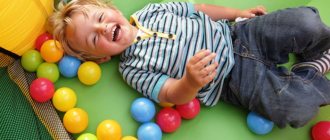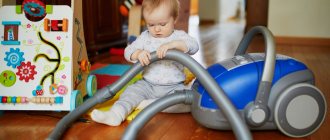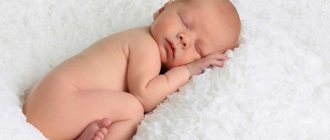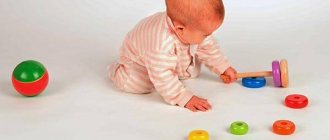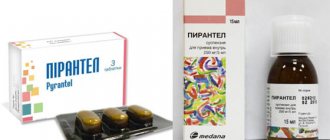10/14/201610/14/2016 Nadezhda Plotnikova 4 comments
The most common objects that surround a child from early childhood are a variety of toys.
Wooden and plastic, dolls and robots, children's cars and construction sets, shiny and modest colors - you can't list all the types and functional features.
But are you sure that they are completely safe for children? After all, some gaming accessories do not correspond to age standards, while others are simply harmful. Our reviews will help you figure out what the most dangerous toys for children are and what their danger is.
Phthalates in plastic toys
Phthalates are special chemical compounds used in industrial production to soften and add elasticity to plastic products.
At the same time, doctors consider these substances to be among the most harmful to the health of children, since phthalates, accumulating in the body, can:
affect the functioning of the kidneys and liver;- disrupt the functioning of the protective and endocrine system, the development of the genital organs;
- provoke the occurrence of asthmatic attacks and cancer.
These substances are most often found in PVC products, which are widespread on our market.
Their harmful qualities are due to their easy release from toys and rapid spread into the environment. Moreover, the amount of toxic compounds depends on the degree of deterioration of the product.
Phthalates penetrate into children's bodies through the skin and during breathing, and since children under one year old often taste everything, these harmful compounds will definitely get into the child's saliva.
And although such substances are prohibited in European countries, in our country they are still added to PVC products.
To understand how harmful various plastic products are to our bodies and children’s bodies, a special examination should be carried out.
However, this is not always possible under normal conditions, and considering that most toy devices were brought to us from China, you need to be especially careful.
How to keep children safe?
If you want to accurately “recognize” harmful toys, experts recommend taking into account the following factors:
- Product labeling. Refuse to purchase if on the product itself or in the accompanying papers there are three arrows (in the form of a triangle), inside of which the number 3 is placed. The letters PVC and Vinil indicate the PVC material. But some Chinese manufacturers do not label children's products at all.
- Typically safe plastic is hard and cool. Some children's products made of PVC can also be hard and hard (for example, a toy furniture set), but most often they are quite soft, resembling human skin when touched.
Why are dangerous anti-stress toys?
Many of the toys can cause not only poisoning due to the content of dangerous and toxic substances, but also affect the mental development of the child. This is due to the appearance of the toys and their skills. At the moment, the materials from which children's toys are made are controlled, but the appearance and assessment of mental safety do not matter and are not regulated.
Why are dangerous anti-stress toys:
- Oddly enough, anti-stress is included in the list of dangerous toys. Now on the market you can find a large number of funny fish, iguanas, and super animals. The main advantage is that these products stretch, helping to reduce children's anxiety.
- However, excessive use leads to the fact that a child or teenager cannot do without such fun. After all, with the help of them, he sublimates not only negative, but also positive emotions. The problem is that positive emotions should not become gray and invisible. The child becomes like a robot, because almost all emotions go away when stretching anti-stress fun.
- It is very important to develop a child’s emotionality. Such toys allow you to remember emotions that are very similar to hugs and smiles. However, it is worth understanding the reason for the need. If a child does not have enough hugs and attention, he is constantly stressed. Constant massaging of such toys, stretching them, leads to the fact that the child prefers fun to real communication with parents, hugs, and tactile contacts.
Antistress
Interesting articles about children can be found on our website:
- What is a slime toy, why is it needed?
- Garlands for the New Year
- Hanging chair cocoon
- Theater puppets
- Vase using sgraffito technique
- Busyboard
The design of toys depends on the imagination of the manufacturer. Psychologists and teachers do not participate in the development of toys, which is why scary toys appear on store shelves that negatively affect the formation of a child’s character. Such toys can cause an aggressive state in a child and provoke mental disorders.
Lead in paint
Children's toys can also contain this heavy metal, especially in paint. Some unscrupulous manufacturers of children's products exceed all permitted standards many times over.
A large amount of lead in the body often provokes the occurrence of:
- anemia;
- brain diseases;
- kidney damage;
- digestive disorders;
- disorders of attention and coordination of movements;
- destruction of bone tissue.
To understand how harmful products are for a child, you need to determine the concentration of lead in the paint and the activity of its “release.”
It is also important to know exactly how the baby will interact with the toy - touch it with his hands, put it in his mouth, chew it.
Is it possible to protect a child?
It is impossible to tell by eye whether there is lead in paint; this can only be judged after specialized tests. Therefore, you can save children from contact with this dangerous substance if you purchase certified products in children's stores.
How to choose a safe toy
Knowing which toys can be harmful to a little person, parents can “filter” the items. However, in order to protect your baby as much as possible, you need to buy the product you like carefully, following a few simple rules. We recommend:
- check the availability of a quality certificate;
- purchase goods in specialized stores;
- take into account the age of the child;
- give preference to toys made from natural, safe materials: wood, fabric, food-grade plastic;
- evaluate appearance (no nicks, cracks, loose seams, peeling paint, dried adhesive, or stained surface);
- refuse to purchase if there is a chemical smell, loose parts or toxic coloring;
- pay attention to the markings, taking into account that safe items have the “PVC free”, “BPA free”, “CE” symbols.
When purchasing children's products online, read reviews from parents on forums and go to the seller's official website to find out its history. We hope that our recommendations will help you avoid the troubles that come with harmful toys.
Additionally, you can read the article on the topic “The role and importance of toys in the lives of children.”
Mercury in plastic
Playing accessories made from low-quality plastic (including PVC) are also harmful to children.
Unsafe metal can end up in children's products if the premises in which they are manufactured are “contaminated” with toxic mercury vapor. Mercury enters a child's body through touching a toy and inhaling harmful fumes.
Such unwanted interaction is fraught with the following negative consequences:
- damage to the nervous system;
- renal failure;
- gastrointestinal diseases;
- autoimmune diseases;
- pathologies of the respiratory system.
Signs of mercury poisoning may not appear immediately, but only several weeks after it enters the body.
Mercury vapor is especially harmful for children under one year of age. This is due to the peculiarities of metabolism in early childhood - mercury in children is poorly removed from the blood and organs.
How to warn?
The advice is quite simple - you should not buy toys on the run, in stalls and kiosks. You still won’t be able to determine it by eye, and in dubious places you are unlikely to find accompanying documents and certificates. Therefore, saving on children's goods is excluded.
Musical toys
Photo: pixabay.com
All kinds of pipes, drums and similar musical instruments for children develop the child only if they are made of high-quality materials and have the correct sound. On the toy market you can find children's instruments that exceed the sound threshold. As a result of using such pipes, hearing development will be disrupted and deafness may occur. Therefore, when buying musical toys, choose those that produce a clear, quiet sound without extraneous wheezing or noise.
Phenol in baby dolls
This chemical compound is used in many production processes, including to shape rubber and PVC products. Phenol, when penetrating a child’s body, can have a detrimental effect on the following organs and systems:
- respiratory organs (phenol is especially dangerous for children suffering from asthma);
- digestive organs;
- immune system (allergic reactions occur);
- nervous system (headaches, insomnia).
Rospotrebnadzor employees often seize rubber dolls from China that contain large quantities of harmful phenolic compounds. Therefore, such a threat is not a fiction, but a very real fact.
How to keep your child safe?
The presence of phenol in children's toys can be assumed based on the following criteria:
- rich chemical “aroma”, noticeable even through the original packaging;
- poor quality of the product - unevenness, nicks, sticky surface, drips and peeling coating.
Experts in your own right
Conscientious manufacturers send their products to special laboratories where they conduct sanitary-chemical and toxic-hygienic studies. Toys are not only tested for the presence of harmful substances: lead, arsenic, mercury, but also tested for strength and safety. For example, rattles are repeatedly thrown from a height of 85 cm. Plastic toys are tested for sharp edges and resistance to saliva and sweat. But it’s unlikely that all manufacturers do this. How can you be sure that their products are safe?
Reference
Does the toy smell nice like vanilla or caramel? Manufacturers often mask low-quality polymer “chemistry” with other odors.
Smell it . An intense odor indicates low-quality plastic. By the way, we are not talking about a bad smell. Often, on the contrary, a plastic toy exudes aromas that are attractive to a child’s nose: vanilla, caramel. So the unscrupulous spirit of low-quality polymer.
Expert opinion
Pediatrician Oleg Konstantinov:
– If after playing a child has a headache or allergic reactions (cough, tears from the eyes, skin rashes), sleep disturbances, upset stools, vomiting, shortness of breath or palpitations, poisoning with toxins (for example, phenol or formaldehyde) can be suspected. By the way, when a toy gets into water, the release of these substances can increase several times, so do not use suspicious toys in the bath under any circumstances.
After purchasing, be sure to wash plastic or wooden toys with soap (or treat them with alcohol), and wash soft ones with baby powder and dry them.
Article on the topic
Second Life.
What can you make from old children's toys? Feel it .
The seams of plush animals must be strong. The eyes and noses are sewn on so that the baby cannot tear them off. And the padding should not contain sharp objects. If granules are used as filling, they must be packed in an additional case. Scratch and lick with your fingernail . Surface staining is allowed in toys, but not in rattles. But both of them should not have an irritating effect on the mucous membranes. The paint didn’t come off, the tongue didn’t stain, we didn’t feel any foreign taste – well, that’s good.
Inspect . There are no nicks or glue drips - this is a plus. The body is durable, there are no sharp edges or corners - great. Now make sure that the fastening elements do not protrude above the surface of the toy, and that folding toys have a stopper to prevent spontaneous folding. It's like that? Great!
Throwing and flying toys should have soft tips or blunt ends, and inflatable toys should have strong welds. The voltage in an electric toy should not exceed 24 V.
Article on the topic
Bang bang, you're dead!
Is it worth banning military toys for a child ? Listen .
When buying a talking or musical toy, evaluate the volume of its sound. It's not just that the baby may get scared. A child's small ear canal amplifies noise differently than an adult's ear. So children's machine guns and pistols that make too loud sounds are extremely dangerous. Read . Carefully read the information on the labels. The toy must indicate: its name, the country of origin and its address, the trademark, the age of the child, the main material from which the toy is made (unfortunately, the manufacturer is not required to indicate the full composition), methods of caring for the product, date of manufacture, expiration date services and storage conditions. The presence of the PCT (Russian standard) or EAC marking on the toy (confirming compliance with the requirements of the Technical Regulations of the Eurasian Economic Union “On the Safety of Toys”) should reassure you.
Please respect age restrictions . Don't buy toys to grow into. For example, fashionable flying activities (helicopters, drones) are only suitable for schoolchildren. They are difficult to control, and preschool children can be injured. The use of natural fur, leather, glass, porcelain, pile rubber, cardboard, paper and small parts is unacceptable in toys for children under 3 years of age.
Buy in specialized stores . As a rule, they monitor the availability of documents confirming the quality of toys.
You won't get any accelerators. Do children really need smart toys? More details
Expert opinion
Pediatric surgeon Ivan Osipov:
– Recently, children are often injured by magnetic constructors. If you swallow just one magnet, there will be no big problem - it will come out naturally. But if there were several such parts, they will be attracted to each other and can rupture the intestines. If the contents of the organ enter the abdominal cavity, there is a risk of fatal peritonitis. Toys that run on coin-cell batteries are no less scary. Once swallowed, the “pills” stick to the esophageal mucosa and release harmful substances for a long time. This is fraught with the development of ulcers and even the death of the child.
However, it is not the toys themselves that are dangerous, but non-compliance with safety precautions when playing with them. Therefore, be sure to read the instructions and do not let kids play games that are not appropriate for their age. And always be there. Many games are designed to be played only under adult supervision. After all, even inflating balloons can end tragically if this thing accidentally gets into the larynx. Any small parts (for example, parts of toys from a surprise egg) can block a baby’s airway, so even these seemingly innocent fun can be potentially life-threatening.
"Formaldehyde" teethers
Formaldehyde is a gaseous compound that is actively used in the manufacturing process of plastics, PVC, dyes and textiles. These harmful materials are then used by irresponsible manufacturers to make children's products.
The way this toxic substance enters a child’s body is simple – the baby licks a pacifier, teether or rattle. Formaldehyde vapors are harmful to the child’s body because they contribute to the development of:
- acute toxicosis, manifested by vomiting, cough, weakness, stomach pain and allergic reactions;
- leukemia;
- cancerous formations in the nasopharyngeal cavity.
Especially often, doctors observe allergic reactions of varying severity in children under one year of age, which arise when the child interacts with teethers from China.
How to keep kids safe?
Products containing formaldehyde compounds usually have a strong, unpleasant synthetic “aroma.” But it’s still better to play it safe and carefully study all the information contained on the toy’s label.
European quality standards are indicated by the letters CE; if the product has passed Russian testing, then the “PCT” icon will be located next to it.
Glowing toys made of phosphorus
Many children love glowing bracelets, ceiling and wall stickers, which are mostly made of safe reflective paints and luminescent coatings. Concerns arise from Chinese manufacturers replacing high-quality substances with cheap analogues - phosphorus compounds. They cause problems with the cardiovascular and metabolic systems, digestive tract and normal liver function in the younger generation. Such toys should only be purchased from reliable sellers, checking the certificates.
Flame retardants in soft toys
As the name suggests, fire retardants provide fire resistance to products. The opinion of scientists about their safety is not always clear.
It is believed that when accumulated in the body, these substances can affect the child’s endocrine, immune and nervous systems, causing severe pathologies.
Fire retardants are also used in the manufacture of children's products. However, these substances are easily washed out with water, so experts recommend following certain safety rules.
How to help a child?
Before handing over a funny fluffy bear or bunny to your little owner, be sure to wash the toy with special baby powder, rinse thoroughly and dry thoroughly. If the product is PVC, simply wash it with soapy water.
Caring for purchased toys
You should not think that following the recommendations described above is the final “point” when buying a toy.
Before giving a doll or teddy bear to your baby, you need to perform several important steps:
- Be sure to inspect the toy, remove labels and other attached labels. Small children really like such pieces of paper, so the baby can inadvertently chew and swallow them;
- A product made of plastic, rubber or wood must be washed in hot water and soap. An exception is PVC toys that do not tolerate high temperatures;
- you can also clean the surface of the toy from possible bacteria and other harmful microorganisms using alcohol or a safe disinfectant;
- toys made of textiles, fur or plush need to be washed. This can be done manually or in a machine on a delicate setting. Then the clean product should be dried in the open air.
After water procedures, did the purchased product begin to look unpresentable? Most likely, the material from which the toy is made is of low quality. Therefore, there is no need to regret the damage; it is best to throw away the product.
Before giving a toy to a child, you should carefully study the instructions, especially the warnings section. There you will find all the information on the operation and care of the purchased product. Perhaps the doll should not be bathed, and the construction set should not be stored next to the battery.
Phosphorus in stickers
For children under one year old and older, parents often purchase various luminous applications that can be glued to the ceiling to imitate, for example, a starry sky.
Other mothers believe that the phosphorus compounds contained in such toys can negatively affect the child’s health.
It should be understood that modern manufacturers have long abandoned phosphorus paints, preferring to use luminescent coatings or safe reflectors.
However, some Chinese manufacturers continue to “poison” children with this substance. For example, not so long ago, Chinese toys were confiscated all over the world in which a high concentration of phosphorus was found.
How to keep your child safe?
The advice is pretty standard - when buying, stick to toys from well-known companies. Moreover, you should purchase a set of luminous stickers only in well-trusted stores.
In addition, do not forget to ask for quality certificates and other accompanying documents.
Are phosphorus toys harmful?
Toys that are coated with phosphorus are considered unsafe. These are various luminous applications on the ceiling that create the appearance of a starry sky. These can be various figures that glow in the dark. If you purchase such toys, there is a high risk that the toys are coated with a toxic substance.
Are phosphorus toys harmful?
- Toys that glow in the dark are made not using safe phosphorescent paints, but harmful radioactive components. Nowadays, plastic key chains that glow in the dark with yellow, red, and purple hues are very popular.
- These types of games are most popular among teenagers. There is no radium in the composition, but there are pigments with tritium, which also emits ionizing radiation. It is retained by the metal case, but very often children are curious, so they can open the capsules, as a result of which the toys are harmful to their health.
- In addition, very often such amusements are stored incorrectly, and their integrity may be damaged during transportation.
Glowing toys
Top 10 most harmful toys and children's products
Reviews, including the most dangerous and harmful children's products, are published constantly, updated with new toys from year to year. However, a kind of “standard” of unwanted gaming accessories still exists. We offer 10 of the most harmful toys for children under one year and older.
1. Magnetic constructors. Reviews in the English medical literature demonstrate serious concern among foreign doctors about the popularity of such toys due to the increasing number of cases of children swallowing small magnets.
Doctors' concerns are related to the physical properties of such material. If other foreign objects calmly leave the body during defecation, then the magnetic elements connect and enlarge, creating a kind of “plug”.
It cannot be done without surgical intervention. In addition, magnetic parts can cause intestinal perforation!
Experts do not recommend purchasing a set of magnetic parts for children under three years of age (especially under one year).
2. Poisonous pacifiers. Pacifiers and pacifiers (or rather, the materials used) included in our Top 10 harmful products can lead to the development of acute allergic reactions. To “neutralize” this device, doctors recommend boiling it for an hour.
Well, it’s best to purchase nipples from well-known manufacturers: Avent, Nuk, Chicco, Bebe Confort and other manufacturers. Avoid pacifiers with strings or ribbons that can wrap around a child’s neck.
The mouthpiece of the product must be quite wide so as not to get into the child’s oral cavity. In addition, it is necessary to check the main part of the pacifier, which is placed in the child’s mouth, for holes and scratches.
3. Soft toys. On the shelves of children's goods supermarkets, every parent will find a wide variety of soft toys from various manufacturers, including Chinese ones. They are purchased because of their fairly low price, bright colors and softness of the material.
But in early childhood, such products are not recommended at all due to numerous harmful factors. Inexpensive stuffed toys are usually made from poor quality materials, which can lead to anaphylaxis. Also, children under one year old can suffocate if a large fluffy bear falls on them.
Another fact is that long lint, when swallowed, can create a lint plug that interferes with normal breathing and digestion. In addition, a plush toy is a “storage” of dust, mites and various pathogens.
4. Toy weapons. The “harmfulness” of children’s weapons is growing from year to year, since manufacturers of modern toys are simply obsessed with realism. As a result, some guns and pistols with bullets, crossbows and bows turn into some kind of traumatic weapon.
A child is capable of harming both himself and his playmates (injury to the eye, ear). Also unsafe are “machines” that produce loud sounds that can lead to impaired hearing function. In addition, darts with sharp tips and “cold” weapons - sabers and swords - are dangerous.
5. Recruitment for a young chemist. This gaming complex made it into our Top 10 for its ambiguity and potential danger. The set for a “young scientist” seems to be an educational toy, but failure to comply with basic safety standards can result in burns, fires, and even electric shocks.
Such a set (for chemists) may include various reagents - alkalis, acids, phosphates and other harmful compounds that can lead to poisoning. It is curious that the first set for physicists and chemists was produced back in the 50s and included radioactive Uranium-238 (of course, at that time they did not yet know about its properties).
Now such “punctures” are excluded, but for early and preschool childhood such a gift set is excluded. If, nevertheless, your “natural scientist” demands this toy, read reviews and comments from parents before purchasing and allow him to play with it only in your presence.
6. Excessively loud musical toys. Every child should have a set of children's musical instruments from early childhood to adolescence. But it should be understood that all such toys must meet the highest requirements, which also apply to sound volume.
The maximum sound volume level is 85 dB; if these values are exceeded, deafness may develop.
Also, the “voice” of musical instruments must be clear and clear, without noise or wheezing. However, even with the right pipe or flute, you cannot play for too long; constant sounding can lead to overwork. Also, avoid musical toys made from PVC.
7. Flying toys. Not only Carlson now has propellers, but also a variety of gaming accessories - helicopters, dolls, minions, ghosts and quadcopters. Some manufacturers even attach a propeller to children's alarm clocks.
Of course, a child will be delighted with a fairy-tale or cartoon character flying around the room, but the use of such toys is not suitable for early childhood. Such gaming accessories can only be purchased by teenagers, since small children cannot yet handle flying toys.
In addition, a child of the fifth year of life is able to place his hands or face under the spinning propeller blades. Our Top 10 does not recommend such toys for small children.
8. Toys with electronic filling. High-quality products themselves do not pose any particular danger to children. However, we should not forget that the use of toys containing batteries, other accumulators, speakers and other electronic elements is prohibited according to standards for up to three to five years.
But modern manufacturers offer a huge range of different mobile phones, children's phones, tweeters, robots and even baby dolls with batteries, designed for children under one year old.
9. Pyrotechnic products. Despite numerous prohibitions, including legislative ones, many parents at least do not object to their children using pyrotechnics, such as fireworks, especially on holidays.
Some children purchase these toys on their own.
The danger of pyrotechnic products for children is that fireworks can flare up and catch fire, explode directly in the hands (damaging hands, skin, face and eyes) or seriously frighten a small child. Even a game with banal firecrackers can end in fright.
10. Small toys and objects with small parts. Reviews of print and online forums make it clear that these toys are among the most harmful and dangerous for children under one year old and a little older.
Small construction sets, mosaics, beads, small adhesive parts of soft toys, and a homemade educational set of buttons and beads can pose a danger to a small child. The baby will simply swallow these parts and push them into the nasal or ear canals.
In addition, the 10 worst could include low-quality frame tents and labyrinths that are unsafe for early childhood, cheap Chinese PVC Barbie dolls (by the way, some psychologists generally consider them harmful to the sexual development of girls), and excessively bright rubber and plastic toys.
What toys are dangerous for children?
Many parents are increasingly less likely to purchase soft toys for children, as they collect dust. But besides this, many of them are not safe. Villi, particles of wool or artificial fur, when inhaled, enter the child's respiratory tract. A large amount of dust accumulates inside toys and dust mites multiply. This often leads to allergies and even the development of bronchial asthma. Therefore, under no circumstances should you purchase such toys for children.
What toys are dangerous for children:
- Boys really love toys in the form of weapons . These are pistols, sabers, or darts. However, such games with sharp tips often cause injury. The main danger is that an arrow hits the eyes or ears. Despite this, most manufacturers strive to produce more and more realistic models.
- Children of primary school age love helicopters, as well as toys with propellers . The main difficulty is that such toys rotate quickly and are intended exclusively for children over 12 years old. Children can easily get injured by putting part of their body in the way of the propeller's rotation. Radio controlled toys can frighten your baby.
- Magnetic constructors. For example, the bright neocube construction set, which consists of small balls, is dangerous not only for the little ones, but even for schoolchildren. As a result of the fact that the elements are attracted, blasphemous methods have to be used to separate them. If several of these pellets are swallowed, they can cause serious damage to internal organs, causing holes to form inside the intestines.
Tips for choosing toys
Of course, gaming accessories are intended for children, but they are purchased by adults, so it is the parents who are responsible for the safety of a new doll or car. We offer several simple recommendations that will help you “filter” dangerous toys from useful or at least neutral ones.
- The first recommendation is to look for the CE mark on the toy or in the accompanying document. This sign indicates that the product complies with European safety standards. Also, the packaging must have inscriptions indicating the manufacturer or importer. Toys without a “biography” must be ruthlessly put aside.
- You can’t save on your baby’s health! Our desire to buy cheaper will not be appreciated by a child who, after contact with a low-quality doll or rubber duck, may become covered with an allergic rash. Usually, products of well-known brands are sold in children's stores, of course, and they cost significantly more than goods at the bazaar or retail outlets.
- However, high cost is, alas, not always an indicator of quality and safety. Therefore, before purchasing a toy, read reviews and opinions of moms on forums, and look at the certificate and instructions for use directly in the store. All documents must be in Russian!
- Be sure to read all warnings. They may, for example, say that it is prohibited to use the toy near a flame or water. Or it is recommended to play only in the presence of an adult. You may not have realized that marbles, one of the best and most loved toys of all ages, should not be given to children under 8 years of age due to the risk of getting into the throat and choking.
- Be sure to select gaming accessories taking into account age standards. Of course, toys for teenagers are not suitable for toddlers. The packaging or labels of quality products must contain a sign warning of the potential danger for children under three years of age.
- Soft bear cubs and hares must be suitable for “water procedures”. In addition, in such toys it is important to attach small parts - eyes, buttons, buttons, since a child is quite capable of chewing off and swallowing them.
- Avoid toys made from plastic that is not durable enough. Children under three years old love to try everything, so they need to purchase especially “tenacious” plastic toys that will not break when hit or chewed.
- Rattles, teethers and other play devices for babies should not contain sharp, glued or protruding elements. A child can swallow and choke on these small parts.
- You should definitely touch your future purchase. Find out what the rattle is filled with. On soft toys, inspect the quality of the seams, otherwise the textile will tear and the “filling” will end up in the child’s mouth. The weak point in teddy bears is the seam between the legs.
- A toddler can easily place his own fist in his mouth, so experts recommend not purchasing balls, dolls and other small toys smaller than the size of a child’s fist (usually 5 centimeters).
- Avoid soft plastic and rubber products that have a strong chemical odor. This is a sure sign of not the best materials and a high concentration of various harmful compounds.
- Avoid purchasing musical or other squeaking toys that make excessively loud noises. Such devices may affect the infant's hearing function.
In addition, there are tips for parents regarding the care of already purchased gaming accessories. Before you solemnly present your favorite little one with a new toy, be sure to carry out the following manipulations:
- All labels and other adhesive markings must be removed as your baby may chew them off and swallow them.
- A plastic or wooden toy must be thoroughly washed after purchase with hot water and detergent. Another option is to treat the surface of the object with an alcohol-containing liquid.
- Before introducing your child to a new plush or fabric friend, you need to wash the soft toy in the washing machine (on a special delicate cycle), and then dry it thoroughly in the open air.
- If after washing or washing the toy has lost its characteristics and has lost its “decent” appearance (for example, faded), most likely this product is of poor quality. Such products should be thrown away without unnecessary regret.
Our time is characterized by the presence of a huge number of a wide variety of toys for any age. Not every parent is easily able to understand the functions and features of some gaming devices, let alone children.
Therefore, first of all, focus not on the cost of the gift, but on the quality of the materials. Agree that it is preferable to buy one expensive but good toy rather than several dubious cheap crafts.
After reading our reviews carefully and following the above recommendations, you will purchase the most useful plastic or soft play accessories for your baby that will delight him for a long time.
What are the most dangerous toys for children?
You should not think that consumer goods are produced only in China, and it is these products that can harm a child. As it turned out as a result of research, even high-priced European toys do not always meet the declared quality. To keep your child as safe as possible, it is necessary to purchase toys that are appropriate for the baby’s age and developmental characteristics. Children under three years of age are not allowed to purchase products with small parts, flammable materials, or toys that contain sharp corners that could scratch or cut a child. But even following these rules and purchasing only from trusted manufacturers does not always guarantee a quality product.
What are the most dangerous toys for children:
- In 2007, a scandal involving a magnetic constructor broke out. Many children over 3 years of age have swallowed small pellets. However, in the stomach these elements combine with each other, causing intestinal obstruction. Many of the babies had to be hospitalized and undergo emergency surgery to remove the balls and save their lives.
- In the countries of the former USSR, these toys appeared much later than in 2007. But, oddly enough, the results of their use are also disastrous. Some constructors have led to the death of children. Despite the prohibitions, there are now several models of magnetic construction sets on sale, only now they are presented in plastic stops to connect the plates to each other.
- However, if a child tries, he can easily break the plastic outline, and the balls will easily fall out of it. Therefore, there is still a high risk of danger for the child.
For babies
Quality brands of children's toys
At the end of 2021, Roskachestvo checked 20 brands of children's construction sets from Russia, China, Italy, Denmark, and Germany. The study showed that proven certified designers meet all safety requirements. No deviations were found in the studied samples. According to the results of the study, the TOP 7 best products for children over 6 years old included:
- Hasbro
(
Switzerland - 4.85 points); - LEGO ( Denmark -
4.85 points); - “World of Wonders”
(
China - 4.85 points); - Clementoni
(
Italy - 4.75 points); - Sluban
(
China - 4.75 points); - Mattel Mega Blocks
(
China - 4.65 points); - Brick
(
China - 4.65 points).
And the highest quality construction sets for children up to 6 years old steel brands:
- “City of Masters”
(
China - 4.65 points) - Banbao
(
China - 4.65 points).
The other three brands are from China ( Bela, DIY
and
Lepin
) did not comply with legal requirements regarding labeling.
They did not have a manufacturing date on the packaging. And Lepin
also did not indicate the manufacturer of the product.
Design kits made in Russia also turned out to be safe. However, two brands ( "Fixie" (Bauer)
and
“Plastmaster
”) fell short of meeting the increased standards of Roskachestvo. They didn't have assembly instructions.
But, as experts noted, a good result was obtained due to the fact that the studied construction sets were purchased in large stores where the goods have certificates.

